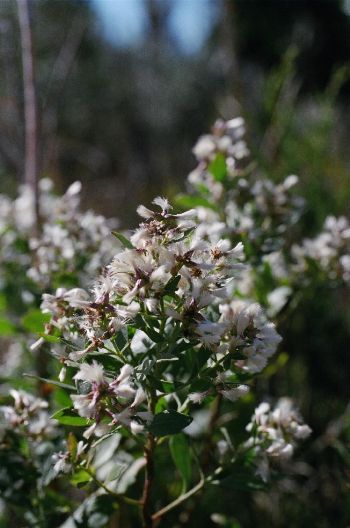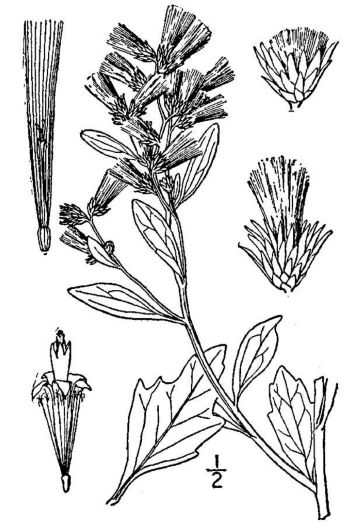Baccharis halimifolia
 |
 |
Photo courtesy Renee Brecht |
Britton & Brown |
| Botanical name: | Baccharis halimifolia L. |
| Common name: | groundsel bush or eastern baccharis |
| Group: | dicot |
| Family: | Asteraceae |
| Growth type: | tree/shrub |
| Duration: | perennial |
| Origin: | native |
| Plant height: | 10 - 15"' |
| Foliage: | Alternate, semi-evergreen, variable in shape, obovate to narrowly oblong, some nearly diamond-shaped, 1 to 2 1/2 inches long, upper half of leaf with a few coarse teeth, leaves from upper crown and near ends of twig often lacking teeth, shiny green above, may be sticky, paler beneath. |
| Flower: | Feathery white tufts, sometimes purplish. Dioecious; both male and female flowers occur in terminal, branched clusters, on separate plants. Flowers about 1/4 to 1/2 inch long. |
| Flowering time: | Flowers late August to late September; fruits late September to late October |
| Habitat: | edges of salt marshes |
| Range in New Jersey: | Along the coast and up the larger streams; rarely in the interior. |
| Heritage ranking, if any: | n/a |
| Distribution: |  |
| Misc. | Deer
browse; nesting sites for grackles, redwing blackbirds, and green
herons especially along canals in marshes. USDA lists as a facultative wetland species in New Jersey; i.e., usually occurs in wetlands (estimated probability 67%-99%), but occasionally found in non-wetlands. Stone (1911) says: "A conspicuous shrub along the thoroughfares and borders of the salt marshes, especially in September, when the seeds are ripe and the bright tufts of silvery white pappus stand out in strong relief against the dark foliage". Insect pollinated. |